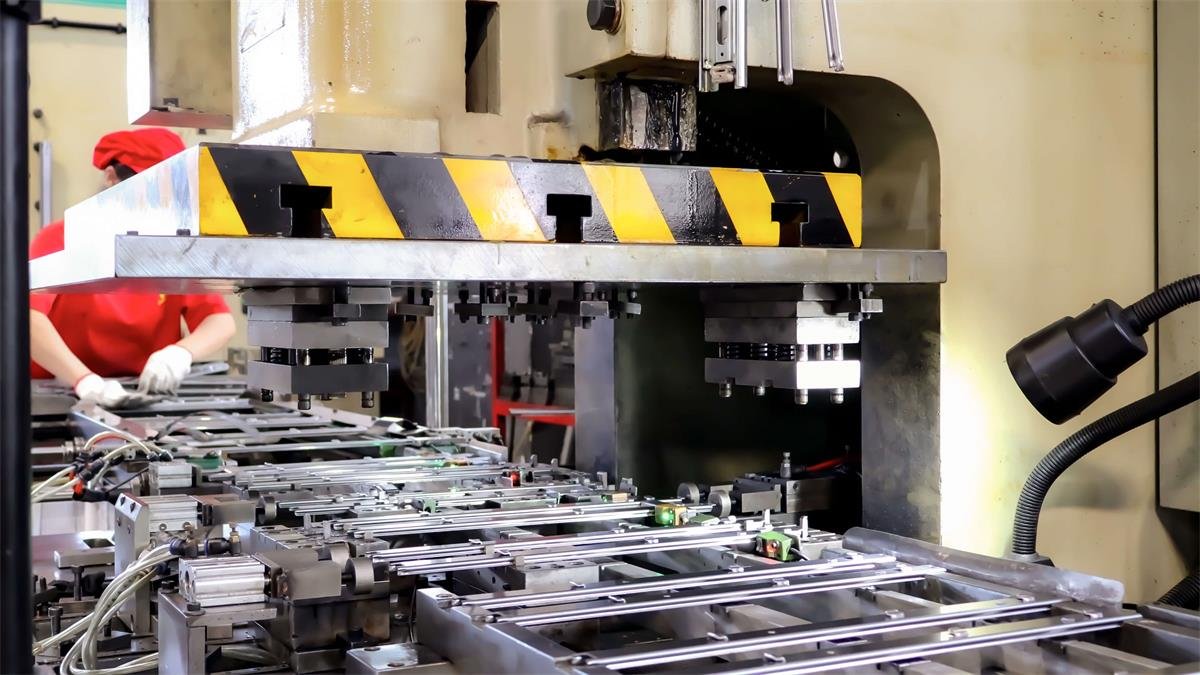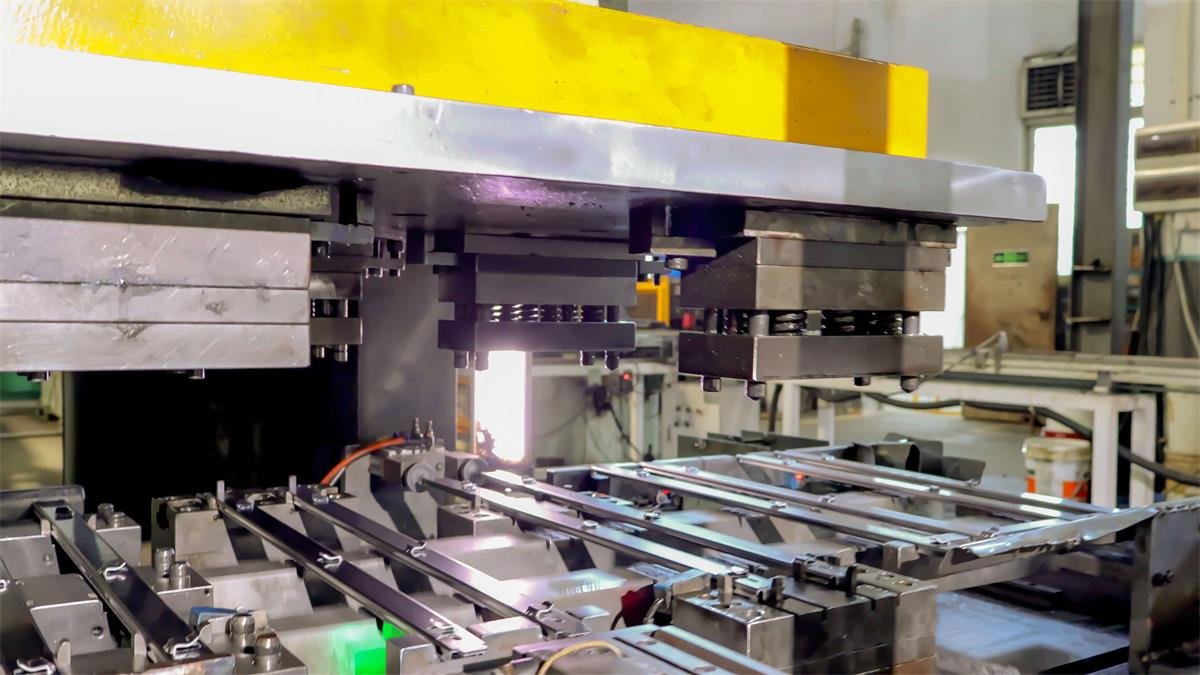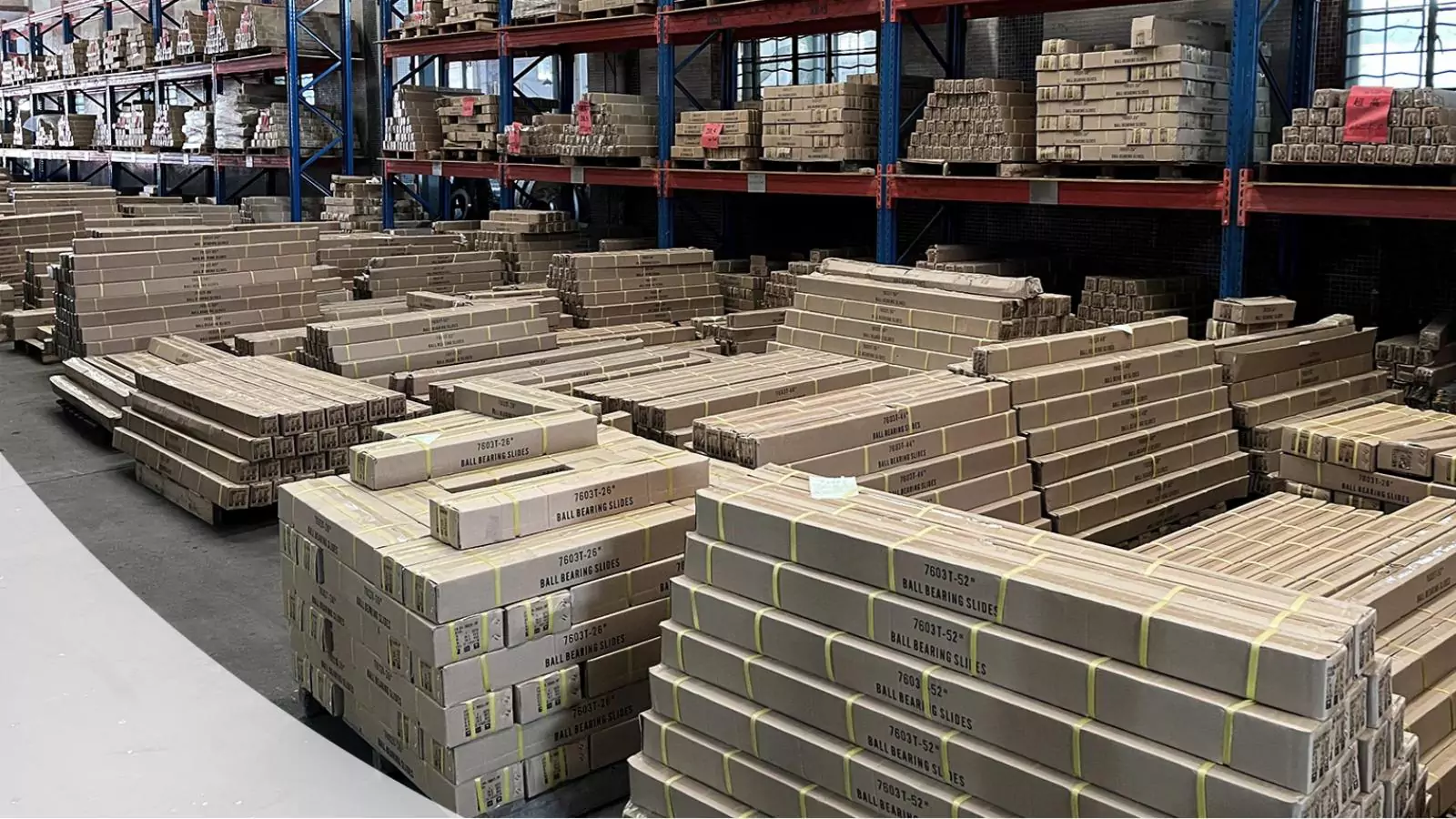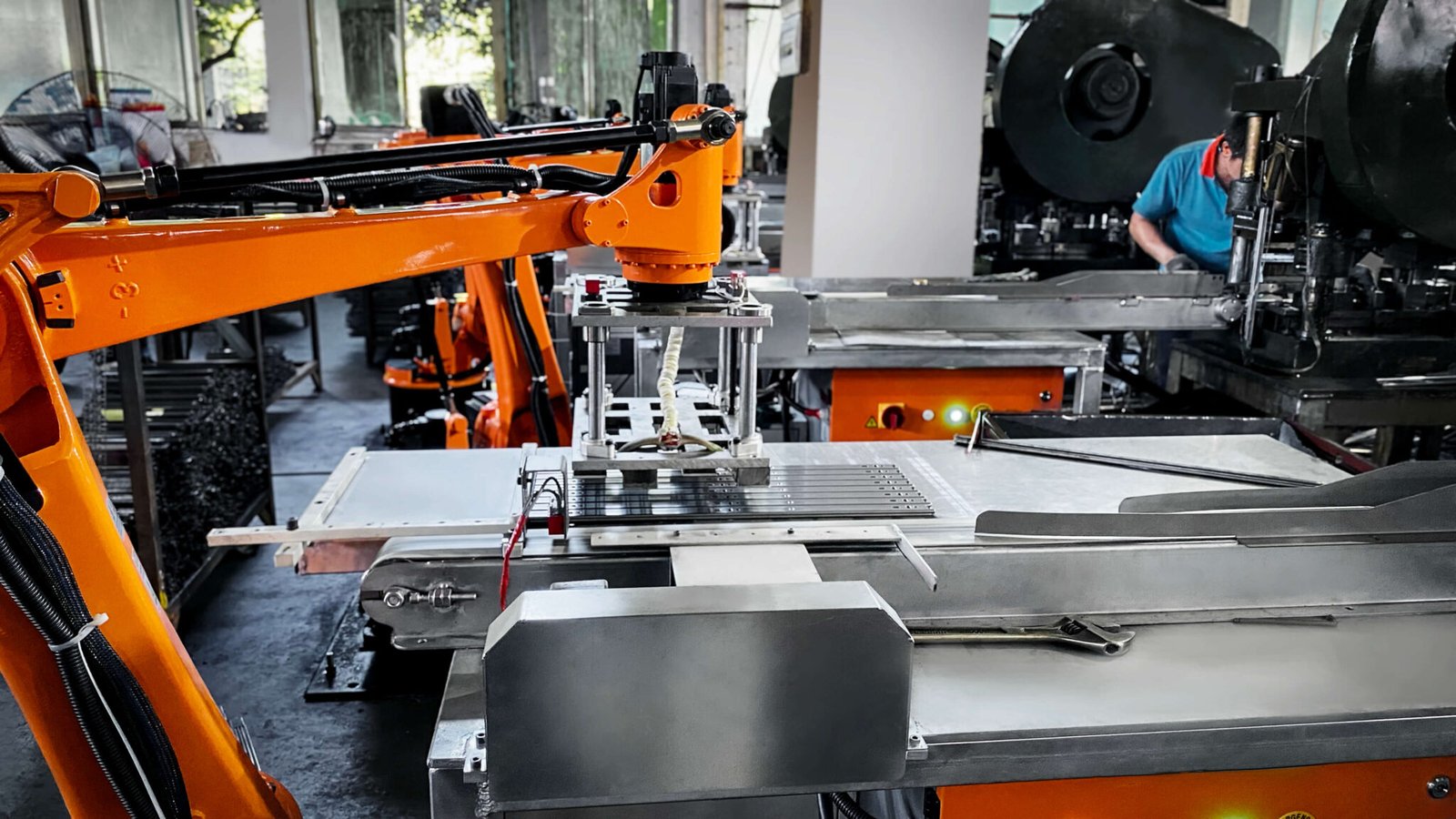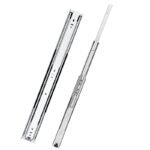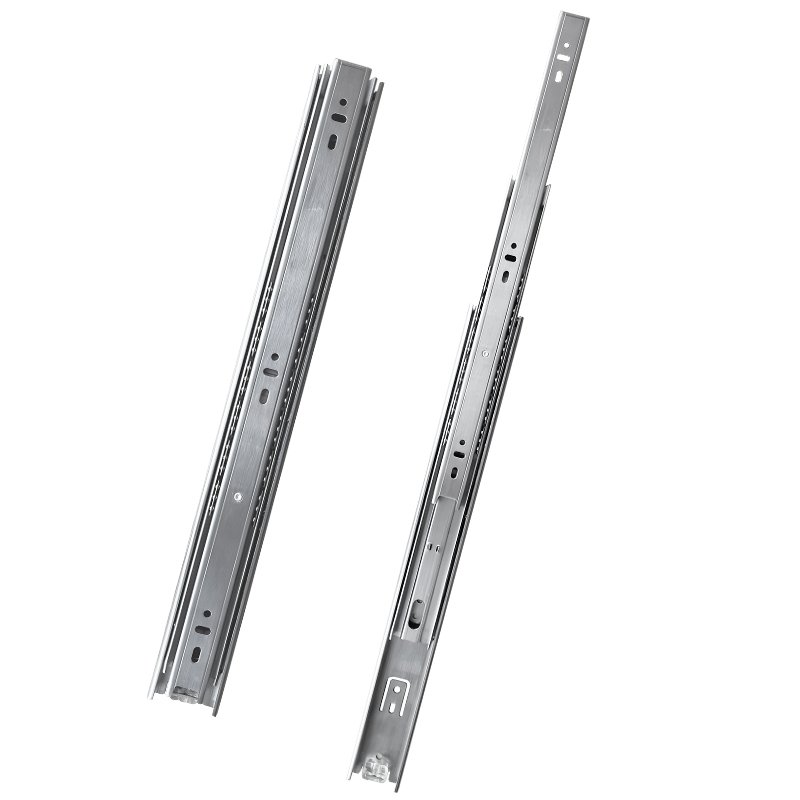
Stainless Steel Drawer Slides
Stainless Steel Drawer Slides U1045
- Width: 45mm
- Size Range: 10″ to 24″
- Material: Stainless Steel 201
- Installation Gap: 12.7±0.3mm
- Loading Capacity: 35KG/18″ (450mm)
- Material Thickness: 1.0*1.0*1.2mm
- Level of Travel: Full Extension
If you need customization, please contact us (+86)18126638650 or email info@censohardware.com
Tech Specs

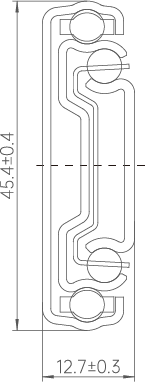
—— Click on the customization option you need and contact us! ——
Size Chart

| Model | A | B | C | D | E | F | G | H | I | J | K | R | S | S1 | S2 | T |
|---|---|---|---|---|---|---|---|---|---|---|---|---|---|---|---|---|
| 8" | 200 | / | 32 | / | / | / | / | / | / | / | / | 128 | / | 16 | / | 200 |
| 10" | 250 | 96 | 96 | / | / | / | / | / | / | / | / | 64 | 128 | / | / | 265 |
| 12" | 300 | 160 | 64 | / | / | / | / | / | / | / | / | 96 | 128 | 16 | 10 | 315 |
| 14" | 350 | 160 | 64 | 64 | 32 | / | / | / | / | / | / | 96 | 160 | 16 | 10 | 365 |
| 16" | 400 | 160 | 64 | 64 | / | 64 | / | / | / | 64 | / | 128 | 192 | 16 | 10 | 415 |
| 18" | 450 | 160 | 64 | 64 | 32 | 128 | / | / | / | 128 | / | 160 | 192 | 16 | 10 | 465 |
| 20" | 500 | 160 | 64 | 64 | 32 | 128 | / | / | / | 128 | 64 | 192 | 224 | 16 | 10 | 515 |
| 22" | 550 | 160 | 64 | 64 | 32 | 128 | 96 | / | / | 128 | 64 | 192 | 256 | 16 | 10 | 565 |
| 24" | 600 | 160 | 64 | 64 | 32 | 128 | / | 32 | 96 | 128 | 128 | 224 | 288 | 16 | 10 | 615 |
Benefits of Partnering With CenSo for Drawer Slides
- Excellent Technology: Our 20+ R&D engineers use 15+ years of design and development experience to develop solutions for your project.
- Flexible Design: Besides providing a wide range of off-the-shelf products, we can customize various slide contents to adapt them to your project plan.
- Continuous Service: The entire CenSo team is committed to being your best partner. We will provide follow-up technical support on slides to ensure that your project is worry-free.
- Quality Assurance: Our drawer slides will be tested for 50,000 pulls and pulls at full load and 48 hours of salt spray test. We will also add corresponding tests according to the slides of different applications
faq
What types of drawers are 201 stainless steel drawer slides suitable for?
201 Stainless steel drawer slides are suitable for light to medium-load drawers, such as kitchen drawers, wardrobe drawers, desk drawers, etc. For drawers with heavier loads (such as drawers for storing heavy objects), if higher durability is required, it is recommended to choose 304 stainless steel or higher load-bearing capacity slides.
What is the best position for drawer slides?
The best location for drawer slides depends on the type and design of the slide. In general, here are some common locations and recommendations:
1. Side Slides
Location: Install the slides on both sides of the drawer, usually near the edge of the drawer.
Pros: This installation method works with most standard drawers and provides balanced support to ensure smooth opening and closing of the drawer.
Recommendation: Make sure the slides are aligned horizontally and in line with the edges of the drawer and cabinet for best performance.
2. Bottom Slides
Location: Install the slides on the bottom of the drawer and the bottom of the cabinet, usually in the center of the bottom of the drawer.
Pros: This installation method hides the slides, giving the drawer a cleaner look while providing even support.
Recommendation: Make sure the slides are installed in a location that does not affect the drawer’s load-bearing capacity and avoids conflicts with the cabinet’s internal structure.
3. Hidden Slides
Location: Install the slides on the sides of the drawer and in a hidden area inside the cabinet.
Pros: The hidden slide design can give the drawer a cleaner look and is suitable for modern furniture designs.
Recommendation: Precise measurement and installation are required to ensure the slides work properly when hidden.
Installation Tips
Horizontal Alignment: The slides should be aligned horizontally to ensure smooth drawer sliding.
Uniform Support: Make sure the slides are installed on both sides or the bottom of the drawer to provide uniform support.
Allow Clearance: Leave enough space to prevent the slides from rubbing against other furniture parts.
Summary
Choosing the best drawer slide position should be determined by the slide type and furniture design. Side slides are suitable for most standard drawers, bottom slides are suitable for hidden designs, and hidden or built-in slides are used for special design needs. Ensuring the correct installation of the slides can improve the user experience and durability of the drawers.
How much weight can drawer slides hold?
The load-bearing capacity of a drawer slide depends on its type, material, and design. Different slides have different load-bearing capacities. Here are the load-bearing ranges of several common types of slides:
1. Light-duty slides
Load-bearing range: Usually around 20-30 kg (about 44-66 pounds).
Applicable scenarios: Suitable for light drawers, such as office drawers, wardrobe drawers, etc.
2. Medium-duty slides
Load-bearing range: Usually around 30-45 kg (about 66-99 pounds).
Applicable scenarios: Suitable for medium-weight drawers, such as kitchen drawers, study drawers, etc.
3. Heavy-duty slides
Load-bearing range: Usually 45-90 kg (about 99-198 pounds) or more.
Applicable scenarios: Suitable for heavier drawers, such as tool cabinets, storage cabinets, etc.
4. Industrial-grade slides
Load-bearing range: Some industrial-grade slides can withstand weights of more than 90 kg (about 198 pounds).
Applicable scenarios: Suitable for heavy machinery, equipment cabinets, and other application scenarios that need to bear heavy weight.
Considerations when choosing slide rails
Slide rail type: Choose the type of slide rail that suits your needs (such as side slide rails, and bottom slide rails), and ensure that its load-bearing capacity meets your needs.
Load distribution: Ensure that the load in the drawer is evenly distributed to avoid concentrated weight causing overloading of the slide rail.
Installation method: The installation position and method of the slide rail will affect its load-bearing capacity. Ensure that it is properly installed according to the manufacturer’s instructions.
Manufacturer specifications: Refer to the specifications provided by the slide rail manufacturer to ensure that the selected slide rail has a load-bearing capacity that meets actual needs.
Summary
Different types of drawer slides have different load-bearing capacities. Light slide rails are suitable for lighter loads, medium slide rails are suitable for medium loads, and heavy slide rails and industrial-grade slide rails are used for heavier loads. Choosing the right type of slide rail and ensuring proper installation can ensure the stability and safety of the drawer.
How to choose the correct drawer slide length?
It is important to choose the correct drawer slide length to ensure smooth drawer opening and closing and maximize space utilization. Here are steps and suggestions for determining the appropriate slide length:
1. Measure the drawer depth
How: Measure the inside depth of the drawer from the front to the back. This is the key basis for determining the slide length.
Calculation: The length of the drawer slides should generally match the depth of the drawer, or slightly shorter to allow for proper installation space.
2. Determine the slide type
Full telescopic slides: Provide a full extension to allow the drawer to be fully extended, suitable for situations where full access to the drawer interior is required. The length of the drawer slides should match the depth of the drawer.
Partial telescopic slides: Provide limited extension length, suitable for situations where the drawer does not need to be fully extended. When selecting, it can be slightly shorter than the depth of the drawer if necessary.
3. Consider the installation space
Cabinet space: Make sure the drawer slide length matches the space inside the cabinet to avoid conflicts with other internal structures or obstacles.
Mounting location: The drawer slide should be installed with enough space inside the cabinet to ensure that the drawer can slide smoothly into the slide.
4. Choose the length of the slide rail
Match the slide rail length: Choose a drawer slide length that matches the inner depth of the drawer to ensure that the drawer can slide out smoothly when fully opened. Generally speaking, the length of the drawer slides should be close to the inner depth of the drawer.
Manufacturer’s advice: Refer to the product specifications and recommendations of the drawer slide manufacturer to ensure that the selected drawer slide length meets the design requirements and usage standards.
5. Check the load capacity
Load adaptation: Make sure the length and type of the slide rail match the weight and load capacity of the drawer. Heavy-duty slide rails are suitable for heavier drawers, so make sure their length is suitable.
6. Consider the usage
Frequency of use: If the drawer is used frequently, choose a higher-quality slide rail and make sure its length is suitable for usage requirements.
Design style: Choose the appropriate slide rail length according to the requirements of the furniture design to maintain the beauty and practicality of the overall design.
Summary
Choosing the correct drawer slide rail length requires comprehensive consideration of factors such as drawer depth, slide rail type, cabinet space, load capacity, etc. Ensuring that the slide rail length matches the drawer depth and meets actual usage requirements can improve the comfort and durability of the drawer. If you are unsure of the rail length, refer to the manufacturer’s recommendations or consult a professional.
Can drawer slides be adjusted?
Yes, many drawer slide designs allow for adjustments to optimize drawer alignment and function. Here are some common adjustable aspects and methods:
1. Horizontal alignment
Adjustment method: With adjustment screws or clamps on the slide, you can fine-tune the horizontal position of the slide to ensure the drawer slides smoothly.
Purpose: Correct drawer imbalance or tilt.
2. Height adjustment
Adjustment method: Some slides allow the height of the drawer to be adjusted to align with the rest of the cabinet. Typically, these adjustments are made through the slide’s mounting holes or adjustment screws.
Purpose: Ensure the drawer is properly positioned inside the cabinet to avoid collisions or mismatching gaps.
3. Depth adjustment
Adjustment method: Some slide designs allow for the depth position of the drawer to be adjusted to ensure the drawer is flush with the cabinet face when fully closed.
Purpose: Ensure the drawer closes in harmony with the cabinet’s appearance.
4. Springs or dampers
Adjustment method: The springs or dampers on soft-close slides may need to be adjusted to change the speed and force of closing.
Purpose: Optimize the smoothness and quietness of the drawer closing.
5. Installation position
Adjustment method: If the slide is not aligned correctly during installation, it can be corrected by repositioning the slide or adjusting its mounting hole position.
Purpose: To solve the problem of drawer jamming or difficulty in opening.
Summary
Most modern drawer slides allow a certain degree of adjustment to ensure smooth operation and good alignment of the drawer. Depending on the specific slide type and design, the adjustment method may vary, so it is recommended to refer to the manufacturer’s installation instructions or consult a professional for adjustment.
Contact Us
